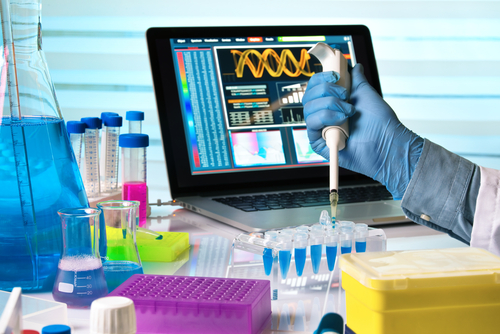New R&D Center Will Focus on Cell-based Therapies
Written by |

angellodeco/Shutterstock
Biopharmaceutical company Brooklyn ImmunoTherapeutics has launched a new center focused on research and development (R&D) of gene editing and cell-based therapies to treat cancer and rare blood disorders, including sickle cell disease.
“Our new R&D facility will provide us with the ability to advance our research and development efforts,” Howard J. Federoff, MD, PhD, Brooklyn’s CEO and president, said in a press release.
The center, based in Cambridge, Massachusetts, shares a location with biotechnology developers Factor Bioscience and Novellus Therapeutics.
In April, Brooklyn bought the global rights to develop and market certain cell-based therapies based on the patented technology and practical knowledge of these two companies.
Factor is developing a portfolio of cell-based technologies to drive the study and treatment of a range of diseases. Its partner, Novellus, is a clinical-stage company that advances the use of cell-based technologies for therapeutic applications.
“We believe co-locating with Factor and Novellus will promote our capability to leverage our collaboration and further our objectives in developing a diversified portfolio of new, advanced therapeutics,” Federoff said.
“Recent presentations by Factor and Novellus … have reinforced our conviction that our development pathways can be broadly applicable to real world disease indications for which no effective therapies currently exist,” Federoff added.
Brooklyn’s recently acquired licensed platform from Factor and Novellus includes three original technologies that the company expects to develop further at its new R&D center.
The first is a highly efficient technology for reprogramming cells, or converting cells from one particular type to another. It uses messenger RNA, known as mRNA, a molecule with the genetic instructions needed to make proteins.
The second is a gene-editing technology that allows the generation of personalized cell-based therapies in which a disease-causing defective gene may be corrected. Used in combination with mRNA-based cell reprogramming, the technology may be used for the development of therapies involving cells from an individual’s own body or from another individual.
The third is a proprietary delivery system that uses tiny particles of fat (nanolipids) to deliver mRNA molecules into the skin, brain, eye, and lung tissue.
“We are delighted to advance our R&D efforts to commence translation of gene editing, cellular therapy and development for our emerging clinical programs with a focus on orphan diseases such as sickle cell anemia, familial amyloidosis and cell therapies for cancer,” Federoff concluded.






